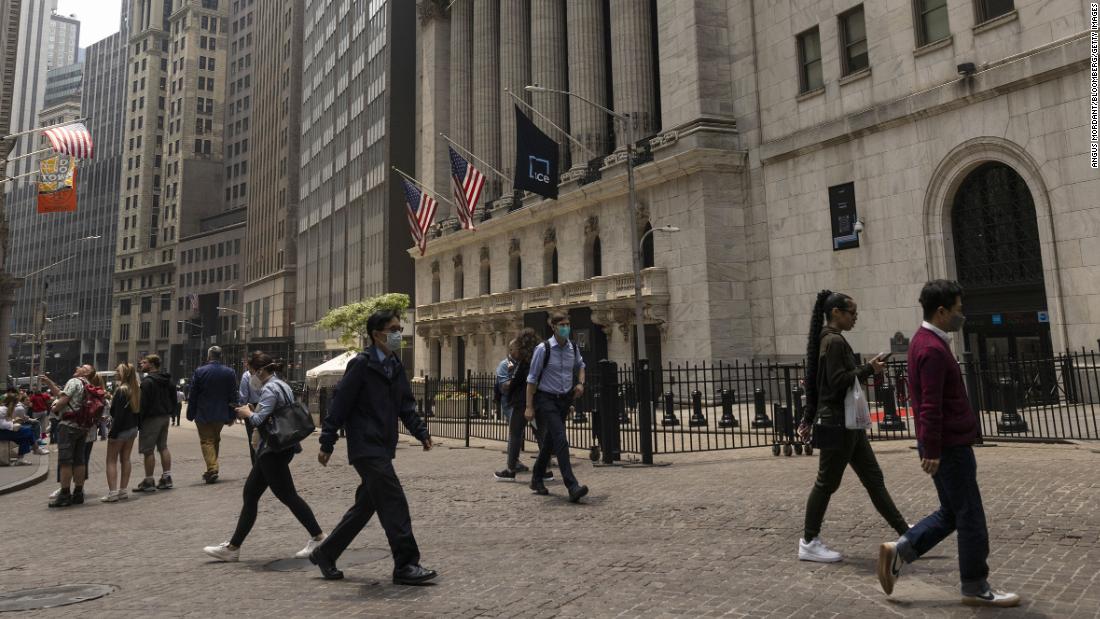- by foxnews
- 23 May 2025
It's official. We're in a bull market

Wall Street is feeling bullish again.
The S&P 500 rallied Thursday to end the day in a bull market, marking a 20% surge since its most recent low, reached on October 12, 2022. That brings to end the bear market that began in January 2022.
Buoyed by gains in big technology stocks, the broad-based index closed at 4,293.93 and crossed the threshold that separates a bear market from a bull market - that's investor-speak for a period of time marked by rising stock prices and optimism on Wall Street. Investors are certainly in a buying mood: CNN's Fear and Greed Index hit "Extreme Greed" Thursday
Markets have remained surprisingly resilient over the past nine months, as 2022 losers like tech and media have bounced back from a disastrous year on hope that the worst is over for those industries.
The AI boom has fueled interest in tech stocks, which dominate the S&P 500. After a horrible year for Big Tech, optimism has returned as ChatGPT has made AI the it-thing in Silicon Valley. Investors are placing big bets on Google, Meta, Apple, Amazon, Nvidia and others, hoping they can drive a new tech revolution with artificial intelligence.
Over the past week, markets have gained momentum, likely because of the end of the debt ceiling crisis, optimism that the Federal Reserve will pause rate hikes at its June meeting and a recent string of strong economic readings.
And while those are all positives for the economy, analysts fear that this could be a short-lived rally that ends up biting investors. Inflation remains too high for comfort. The US economy is still adding jobs but the pace has been mostly slower. Consumers are still spending, but they're pulling back on discretionary expenses like clothing and, focusing instead on necessities like food and leisure activities.
That isn't exactly a recipe for long-term market success.
"We're very late in the economic cycle that's starting to slow and probably heading for a recession later this year," Sameer Samana, senior global market strategist for Wells Fargo Investment Institute, told CNN. "The key difference for us is that you tend to see bull markets coincide with economic expansions, not economic contractions."
Still, since the last bull market, we've had a war in Europe, a banking crisis and a debt crisis among other dramas. Markets are in uncharted territory and while an economic recession coinciding with a Wall Street boom would be a first, "in this market, you never say never," said Samana.
The current situation is a bit more nuanced than the bull market-bear market binary, said Kevin Gordon, senior investment strategist at Schwab. He describes what's happening instead as a "duck market," meaning that stocks look nice and calm on the surface but there's a lot of paddling going on below.
Tech and AI companies with mega-cap stocks are soaring higher and "solving" the market's problems, he said, all while cyclical and smaller companies are suffering.
The S&P 500 is weighted by market value and top-heavy, meaning that just a few companies - mostly Big Tech - are able to boost the index even as the majority of stocks struggle.
"Exuberance around artificial intelligence, along with a resurgent US dollar, has produced extreme divergence and concentration risk in the main stock indexes," said Lisa Shalett, chief investment officer at Morgan Stanley Wealth Management. "Such narrowness is not what new bull markets are built on."
The bottom line: Investors should "avoid getting sucked into this as a new bull market," said Samana. "Keep perspective of what this is, which is a very tantalizing bear market rally."
Investors should take advantage of this swing by trimming the parts of their portfolios that they've been waiting to get rid of, he said as opposed to trying to chase the tech companies that have led this upward move.
Whether we stay in a bull market or not will likely depend on the Federal Reserve's interest rate policy decision next week, said Sam Stovall, chief investment strategist at CFRA.
Since the Fed began announcing changes in the Fed funds rate in 1989, he said, there have been 16 times during rate-hike cycles when the Fed either skipped raising rates or ended its rate-hiking program altogether.
After the Fed either skipped or stopped hiking rates at one meeting, the S&P 500 rose an average 3.6% and gained in price 88% of the time.
"Should the Fed skip hiking in June, history says, but does not guarantee, that the market has further upside potential," he said.
- by foxnews
- descember 09, 2016
United Airlines flight returns to Hawaii after concerning message found on bathroom mirror; FBI investigating
United Airlines Flight 1169 to Los Angeles returned to Hawaii after a "potential security concern" aboard the plane. The FBI and police are investigating.
read more


